

It’s easy to assume that national parks are sustainable. The wildlife is protected and free, and the outside elements that affect the environment are controlled. But on closer look, what’s being protected the most in Serengeti is tourism. The animals and the ancestral tribes that inhabited the land for millennia are suffering the consequences of the way privileged white people understand protection, with a perspective still deep-rooted in colonialism. Decolonizing conservation and sustainability should be the main topics when talking about Serengeti and other Tanzanian national parks, putting the protection of the wildlife, environment and ancient tribes front and center. But it seems like very few truly care. If you want to make a difference, knowledge is key. Here are my two cents.
I left the chaotic and noisy Arusha behind, and entered a different world. One of serenity and peace. Where the views are endless and the wildlife, plentiful. A dream come true for anyone that is lucky enough to visit. I saw the Serengeti as a perfect piece of heaven on earth. Until I realized that it’s not as heavenly for the wildlife, and even less so for the Masai, the tribal people that were evicted from their ancestral lands.
Is the wildlife truly protected?
A safari in the Serengeti was a childhood dream. I’ve had it on my bucket list since I can remember. It’s a once in a lifetime experience that most would absolutely love. But even though I was thoroughly enjoying myself, I quickly started wondering about the sustainability of it all. Sure, the animals are free to roam around, there are no fences, and no one hunts them. But we disrupt their lives to an outrageous extend. Some animals run away when the see or hear the land cruisers coming. Others stay put, like nothing is happening. In the first case we’re scaring them for no reason, preventing them from their normal activities. In the second, they don’t see us as a risk anymore, which is dangerous for their survival if they leave the protected area.
A cheetah is ready to hunt, and there are 20 vehicles full of people elbowing each other for the best picture. The hyenas are feeding, and they have to be alert about the engines going off and on next to their prey. The zebras are trying to cross a road and suddenly must run to the other side because there’s a big truck coming their way.
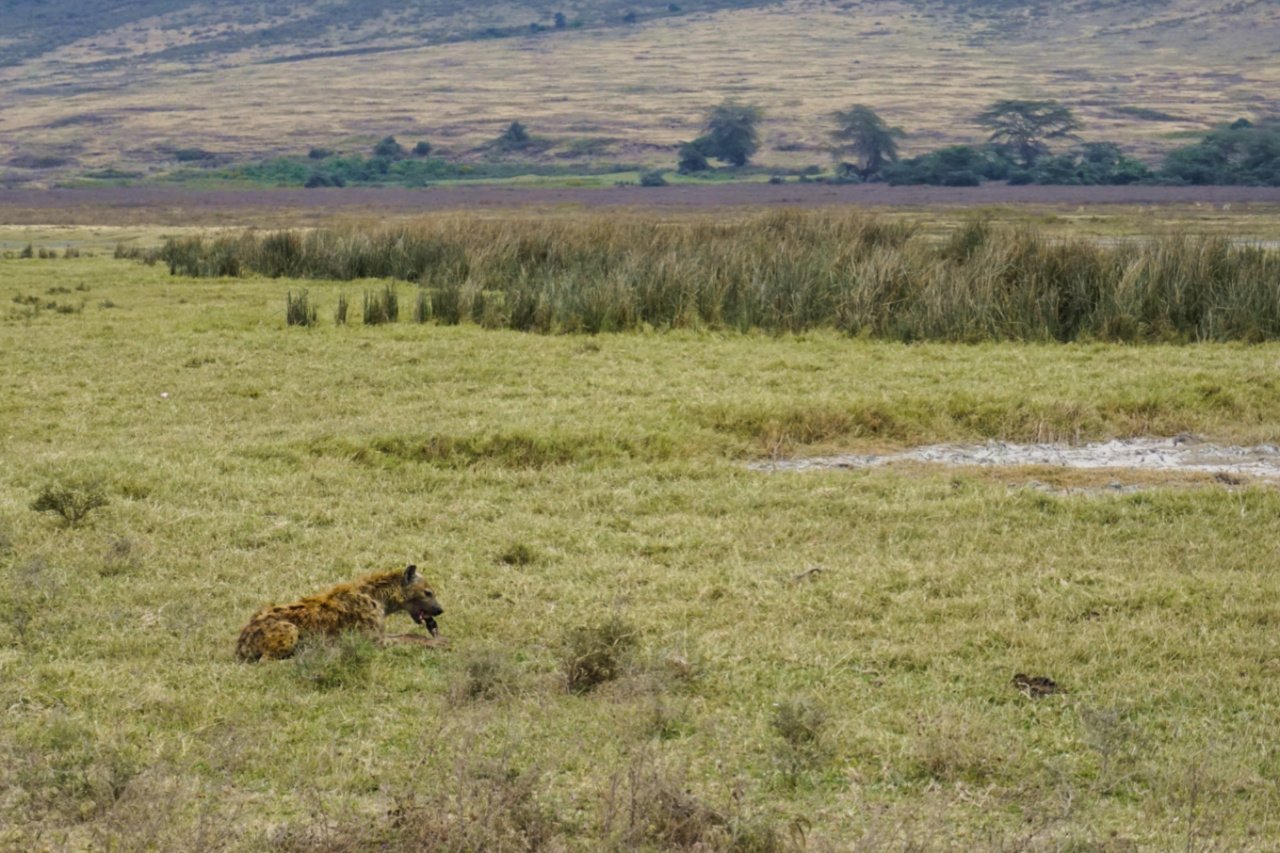
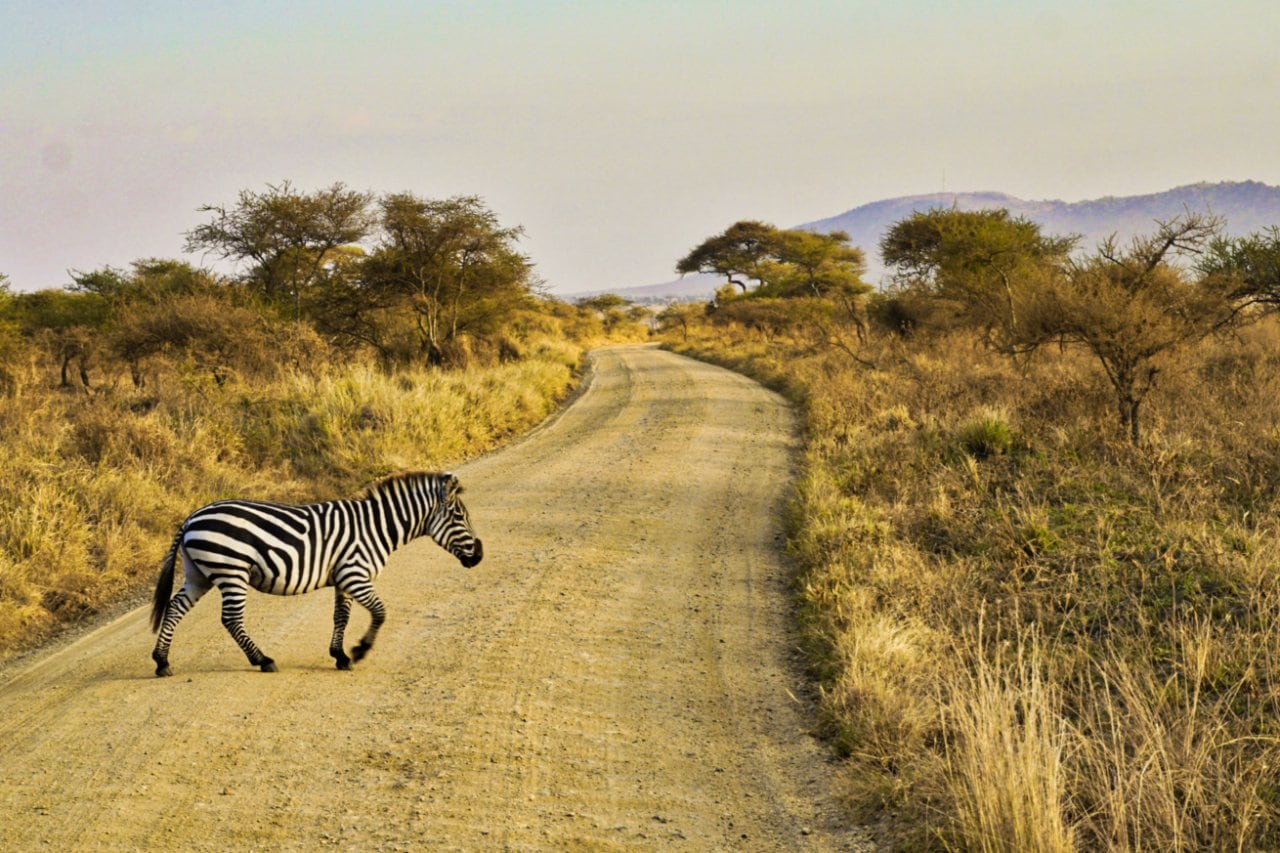

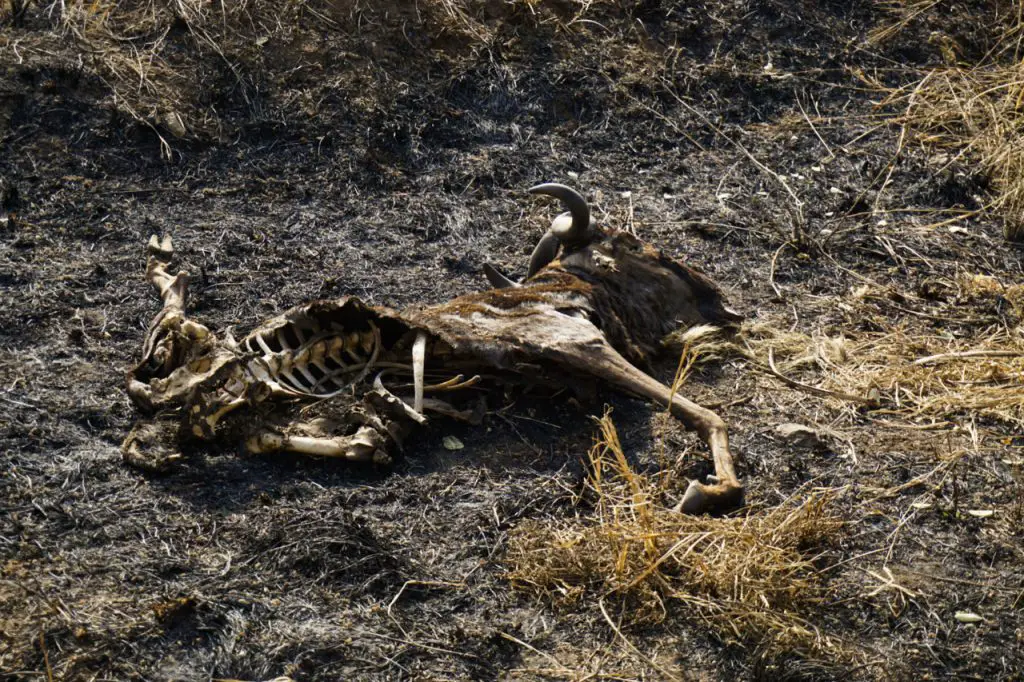
And mind you, I visited in July 2021, when tourism was still struggling with extremely low numbers. I think that this experience in 2019 would have not been enjoyable. My guide commented that he’s seen fights between guides, and even among guests, because one is blocking the view of the other. He told me of crashes between land cruisers to secure the best spot, queues of hours to catch a sight of a particularly hard to find animal, and of many agencies going off-road to satisfy the demand of angry guests that were no able to see what they wanted.
Even worse, there’s documented change in behavior of many of the Serengeti’s inhabitants, from cheetahs hunting in daylight, during the time most safaris will stop their game drives for lunch, to lions roaming outside of the park’s boundaries, where they’re vulnerable to poachers.
The whole idea of safeguarding the wildlife backfired. It seems like what is being protected is tourism –especially since the government’s pockets are quickly filled with the hefty fees that are charged for the privilege of visiting the parks (close to 100 USD per person, per day, plus another couple of hundred for the car and guide).
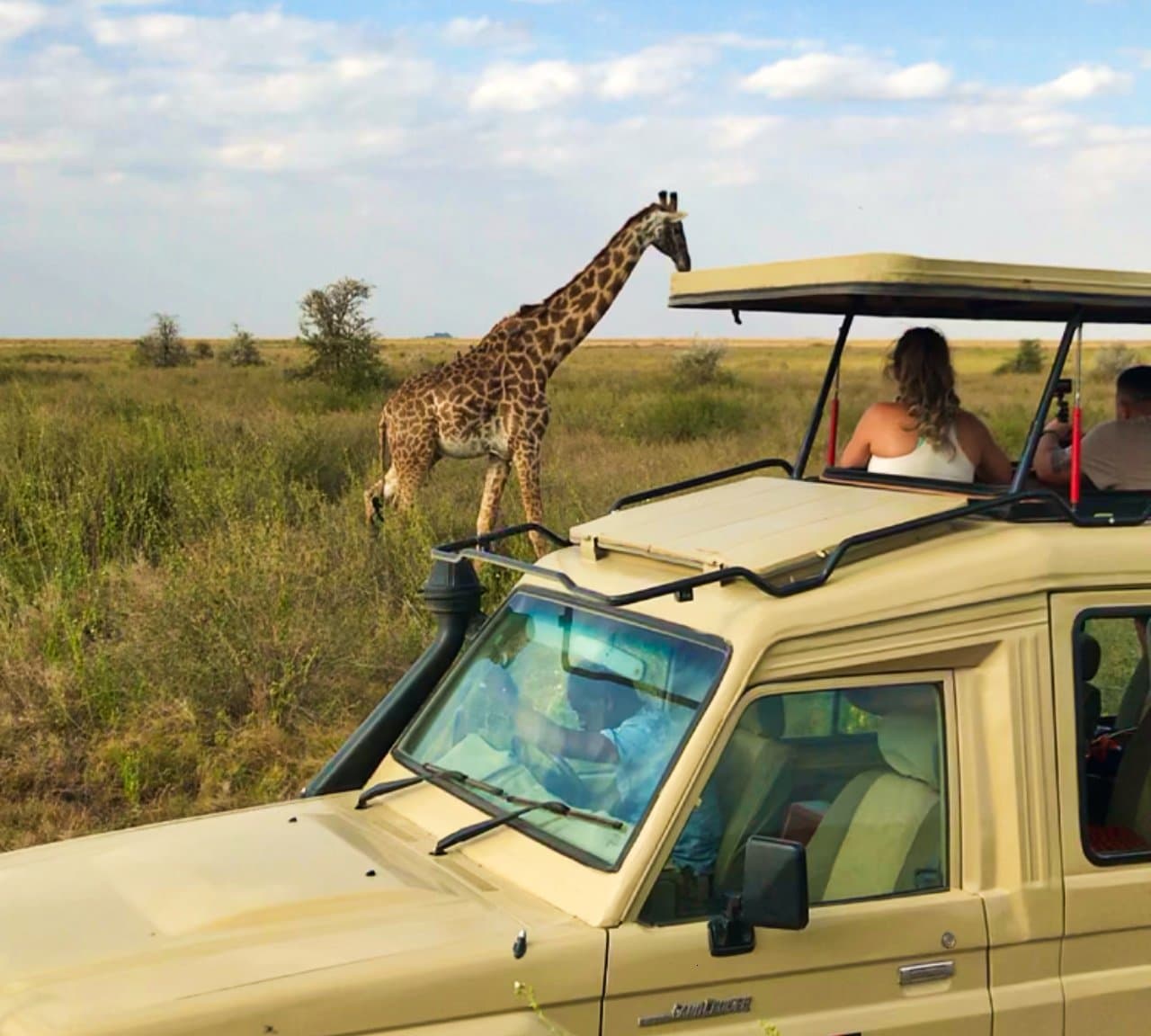
People are part of nature
The second issue, even more complicated than the current effect of tourism, is that the indigenous tribe that have been living among the animals, the Masai, was forced out, so the Serengeti could have the denomination of National Park.
They settled in nearby Ngorogoro and in neighboring Kenya. When the government wanted to convert Ngorongoro into a national park, they put their foot down. No more moving. It was made a Conservation Area instead, to technically allow people and animals to coexist. The Masai and their domesticated cattle should live on the rim and don’t touch the wild animals, while the latter inhabit the crater. Since their ancestral way of life was altered, nowadays many of them spend their lives by the side of the road trying to sale knickknacks or just asking for money, especially the children. Their villages have become a circus, performing dances for tourists. Instead of preserving their traditions, they’re living a poorer life, depending on the coins that passers-by give them. A perfectly sustainable life gave way to one that depends on charity.
A group of white men decided that the Serengeti had to be protected, and they didn’t trust the native people to do so. The audacity to think they know better than those who have been there from the dawns of time is beyond what I can grasp.
Today the parks collect grotesque amounts of money, and the rangers are not able to care for the land the way the Masai could. Tourism is out of control, but it seems like that’s fair play. The crazy amount of land cruisers is not a problem, only the ancestral people.


The importance of decolonizing conservation
Protected areas often perpetuate a colonial mentality and attitude. Native peoples are pushed away from their ancestral lands, under the claim that the wildlife and environment need to be safeguarded, assuming that the conservationists know best. However, the ones that have been caring for it for millennia are not the foreigners with misplaced good intentions, but the ones that have inhabited those lands since immemorial times.
Protecting a place must embrace the worldview of its rightful inhabitants. As we wouldn’t consider relocating leopards because they hunt the gazelles, we shouldn’t force out the tribes that we see as a danger for the wildlife. They are, in fact, the true guardians of the earth, the ones that allowed it to thrive before there was a need for conservation.
What’s more, this need comes from the existence of hunters, poachers, and those looking to expand the land for industrial cattle raising and agriculture. All product of the needs of elites that are today raising the flags of conservation. It’s not the average Jane or Joe who endangered species to get a trophy head back home. Nor the ones that could afford to buy the ivory that poachers killed for. Even less the ones that are willing to destroy savannas, jungles, and forests to satisfy the industrial need to raise cattle and plant crops by the millions.
The tribal peoples have a sustainable way of life. They raise the animals or plant the lands they need for food. They don’t gather for the sake of gathering, as much of today’s society is taught to do.
From Boers in South Africa to Germans in the Patagonia –as the pilgrims did when colonizing the United States–, they praise themselves for making the land ‘useful’ through arduously cutting of the native bush or forest, irrigating, and cultivating it. Their work made them prosperous, successful. And they can’t grasp that their way is not only one amongst many, but also wrong for the indigenous worldview. Success is a capitalist concept. Not everyone strives for riches. Actually, having more than needed has no space in the mentality of ancestral tribes.
Look at nature. If any animal suddenly started to hoard more than they could eat while others starve to death, every scientist in the world would be wondering what went wrong with that creature. But humans have been doing exactly that for generations. And instead of worrying us, we congratulate them and call them successful.
That mentality is what come to play in conservation. It often arises from a good place, of truly striving to protect the environment and the wildlife. But the fact is that sustainability has three pillars for a reason. We can’t defend the environment and the wildlife without including the local communities in that sphere of protection.
If you think about it, concepts like ‘indigenous’ and ‘wilderness’ have a deep root in white privilege. Only from our western perspective a place is wild and its inhabitants, indigenous. For ancestral peoples their lands need no taming, since they know how to thrive there in perfect balance with nature.
Instead of pushing them away, conservationists need to learn from the ancient guardian of the earth. Native knowledge should be recognized and taught. They have been living in the savannas, forests, and jungles from millennia, so they sure know how to protect them. The Masai in the Serengeti, the Nunak, Guaraní and Yanomami in the Amazon, the many different Adivasi in the Indian Tiger Reserves, just to name a few.
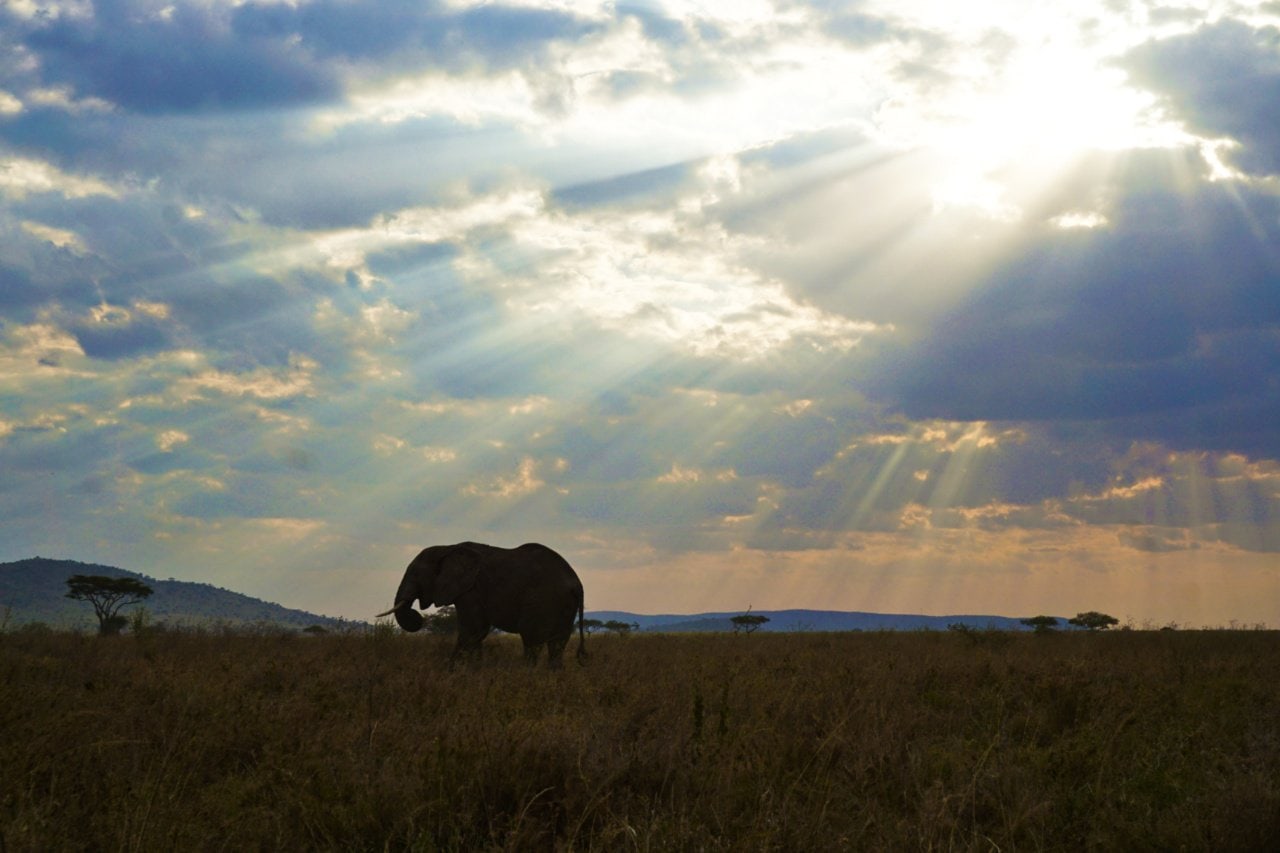
How to sustainably visit the Serengeti National Park (and every other protected area in Tanzania)
By pointing out all the hardships I’m not trying to deter you from going. Considering how much joy the experience brought me (see my smile in the photos below), it’d be selfish and unfair to stop you from living it yourself. But there are steps to take to make sure you’re not causing even more harm. Here are five concrete ways in which you can make your visit more sustainable.
1. Visit off season
The horror stories I heard from guides and other locals about the hordes of people flooding the park during June to September are deeply upsetting. It’s true that animals are easier to spot during this time because they tend to congregate around the scarce sources of water available in the dry season, but there will be animal sights throughout the year. Avoid it during the height of the rainy season (March to May), but the rest of the year can bring magical sightings, like wildebeest giving birth to their calves in January and February.
2. Never ask your guide to go off road, and tell him to stop if he does
I find it hard to believe that people would encourage their guides to pursue an animal at any cost, and even harder that the guide might oblige. But their salaries are low, and most of their wages comes from tips, so –even if they do know better– they are willing to do almost anything to keep their guests happy. Changing their behavior is the work of the Tanzanian government, but you can do your part by enjoying what you can see from the roads (which is plenty!). And if your guide offers you to go off road, tell him no, no matter how tempting it can be. You can take this one step further by looking for an agency that has a certification in responsible tourism.
3. Manage your expectations. There are animals you’ll see and others you won’t
This should go without saying. The national parks are not zoos, so animals won’t be on display to be seen when you want to. Still, the chances are that you’ll see a lot, both variety and numbers. The guides are in constant radio communication, so if a rare animal is spotted by one car, others can also go and see. This allows for higher chances to watch cheetahs, leopards, and rhinos, but there are no warranties. And that should be fine. You’ll see what the park wants you to see, and it’ll be an amazing experience anyways.
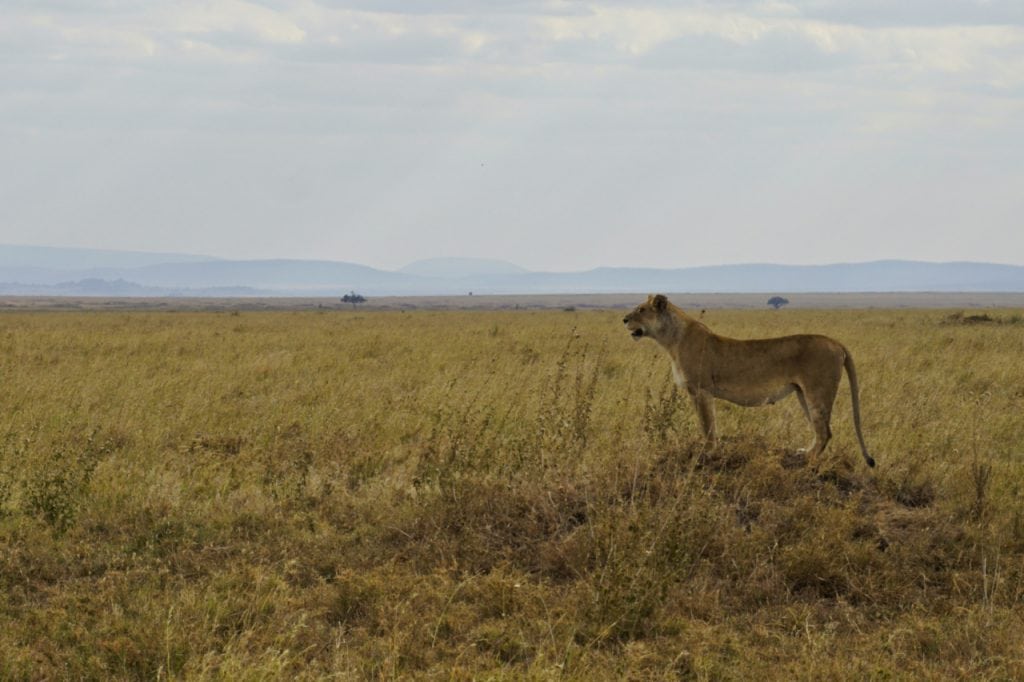
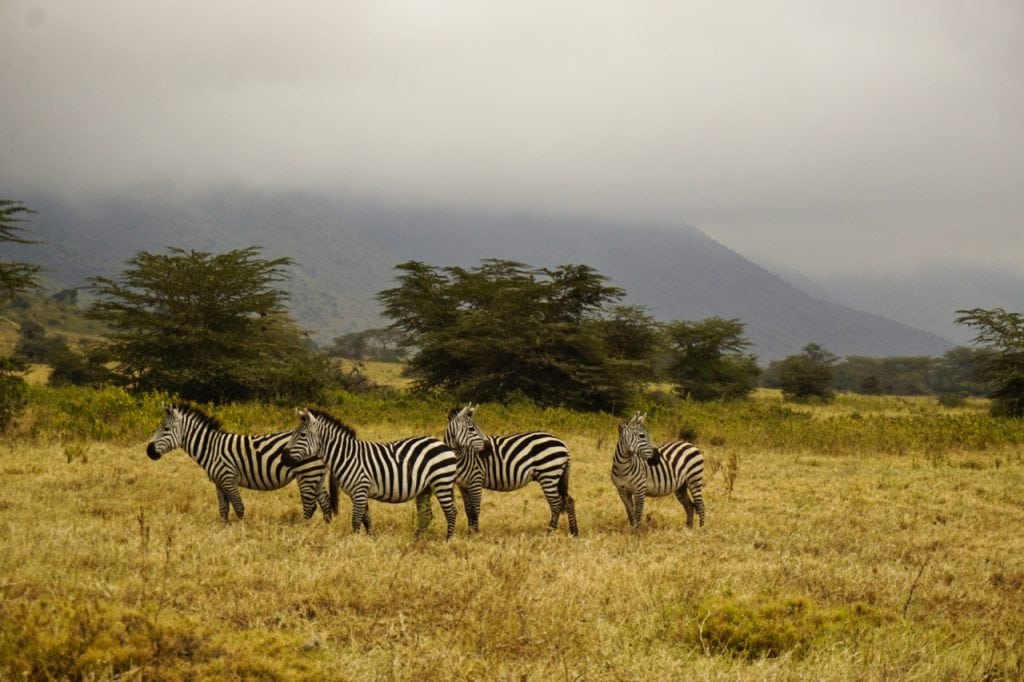
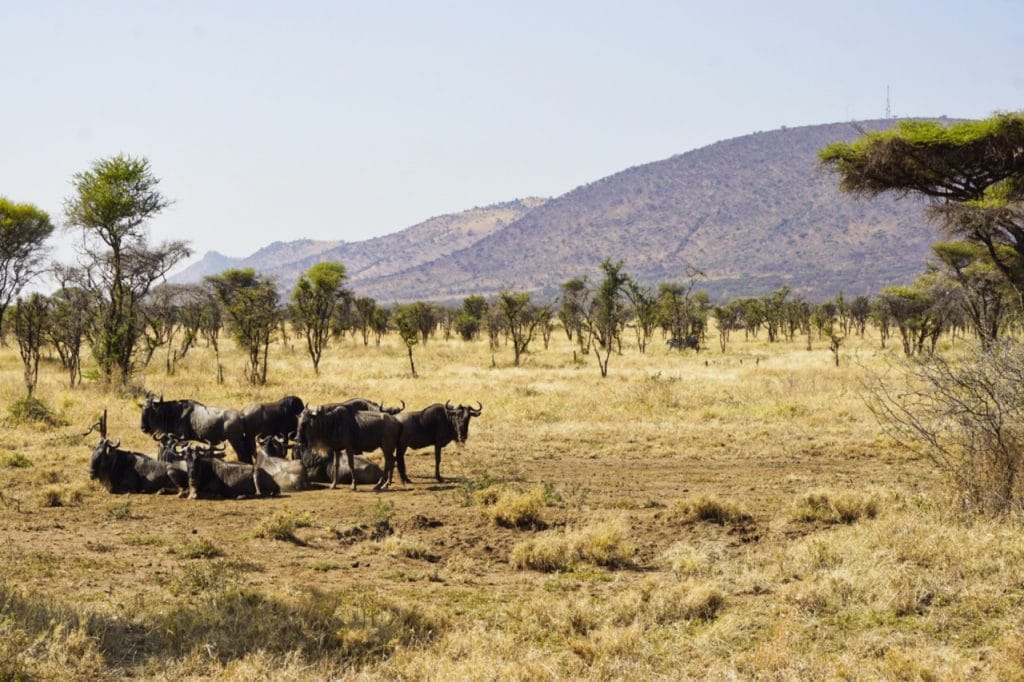

4. Never feed the wildlife
Another essential sustainability principle. Since I’m not trying to invent the wheel here, I prefer to cover the basics. Because even if it should be obvious, SO MANY PEOPLE are oblivious to the harm they do using food as bait to get animals closer, or to have a better photo. Our food can disturb the environment, can make the wildlife sick, and has the potential to make them dependent on humans for feeding, which alters the ecosystem, and puts the animals in danger when humans stop visiting their land (like during a pandemic). Simply don’t.
RELATED POST → Sustainable Travel Photography
5. Don’t give money to children
This is a general principle, applicable all around the world. If kids are asking for money, they are not going to school, they are developing a habit of depending on charity, and they are tacitly encouraging their parents to have more children as a source of income. This gets even worse among indigenous communities. Not only the kids will abandon their traditional way of life and forgo the possibility of an education, the parents will also let go of their traditions to make it easier for the kids to approach unaware tourists.
I know most people genuinely want to help, but even though giving a few dollars to a cute kid will make you feel good, there are far better ways in which your money can make a difference. Just to name a few, donate to a local NGO supporting indigenous or children rights; buy your food and book your accommodation in locally owned businesses; and buy crafts made by locals.
I hope this piece opened your eyes to a reality hidden from obliviously happy visitors. The Serengeti –and in general the Tanzanian national parks, conservation areas, and game reserves– are magical places. The landscapes and the wildlife are guaranteed to leave you speechless. But the way conservation and tourism are being carried out is not sustainable. I’m sorry to be the one bursting your bubble. I know that most likely you just want to see lions and giraffes, and not have to spoil your vacation worrying about the Masai, but knowledge –especially among the paying tourists– can actually make a difference in the way the safaris are performed and the lands are preserved. If all of us care, those who make the decisions will have to care too.
WHAT TO READ NEXT?
- A glance into Masai culture: living with the Masai in the bush in Tanzania
- Volunteering in Africa: white saviorism, orphanage tourism, aid dependency, and a safari
- Train across Tanzania: crossing the country (twice) by railway
- The Ultimate Guide to Sustainable Travel
- Does your place of birth determine who you are? A reflection on tourism, migration, and globalization
- Geopolitics of Travel: insights beyond what the media portrays
- Travel resources: the best travel tips and tricks
Liked it? Want to read it later? Pin it!


Enjoyed what you read? A lovely way to show your appreciation is by buying me a cup of coffee 🙂
Your support will ensure I keep bringing you stories and insights from around the world! Thanks so much!



This is amazing Coni, I enjoyed the read.
Thanks so much, Ossie! These kind of pieces are my favorite to write, but the hardest ones to get people to read, so it’s lovely to hear you enjoyed it 🙂
Wow! I learned more reading this post than with all the greenwashing conservation NGOs’ information about the park and the Masai. Thank you for writing this. I hope the whole world reads it!
That’s so heartwarming, Danny! Thank you for letting me know how you feel 🙂
I’ve never heard of the term decolonizing conservation, which tells you how much information about it is needed. Thank you so much for opening my eyes and bursting my white perspective bubble. Really, a truly amazing article!!!
Thanks so much for taking the time to write, Charlie! This piece is particularly close to my heart, so it makes me really happy to read that at least it helped changed one person’s perspective